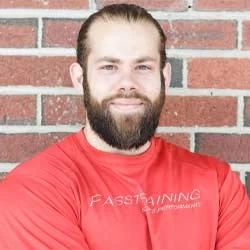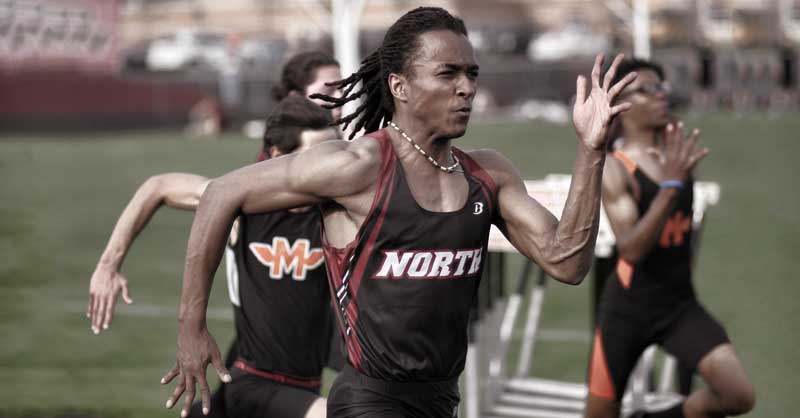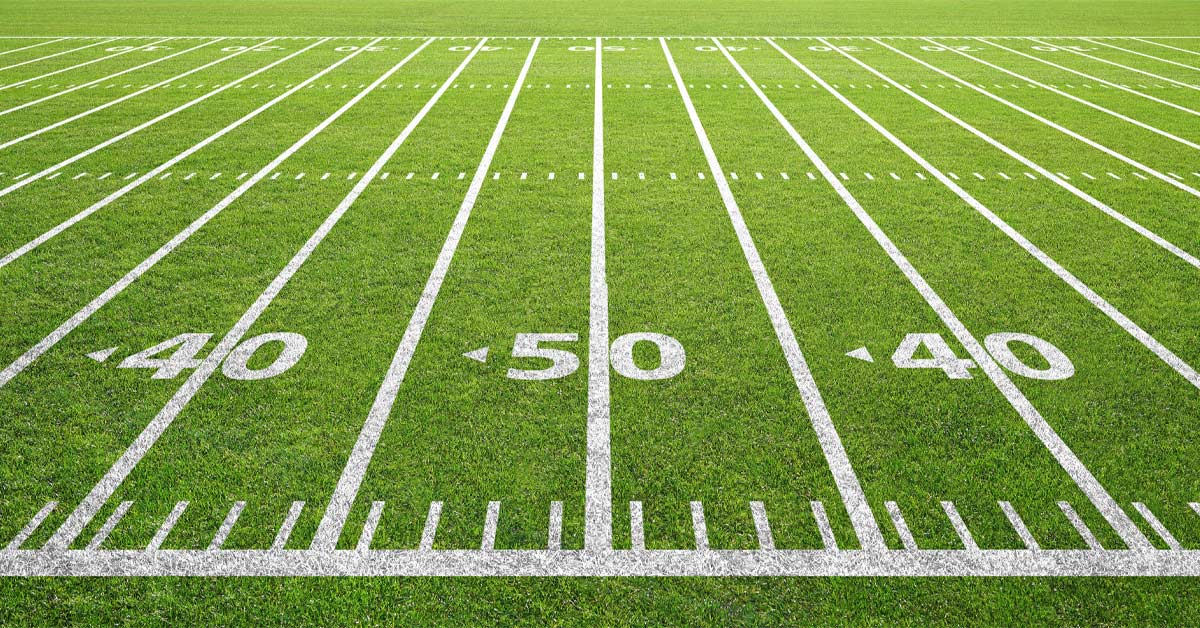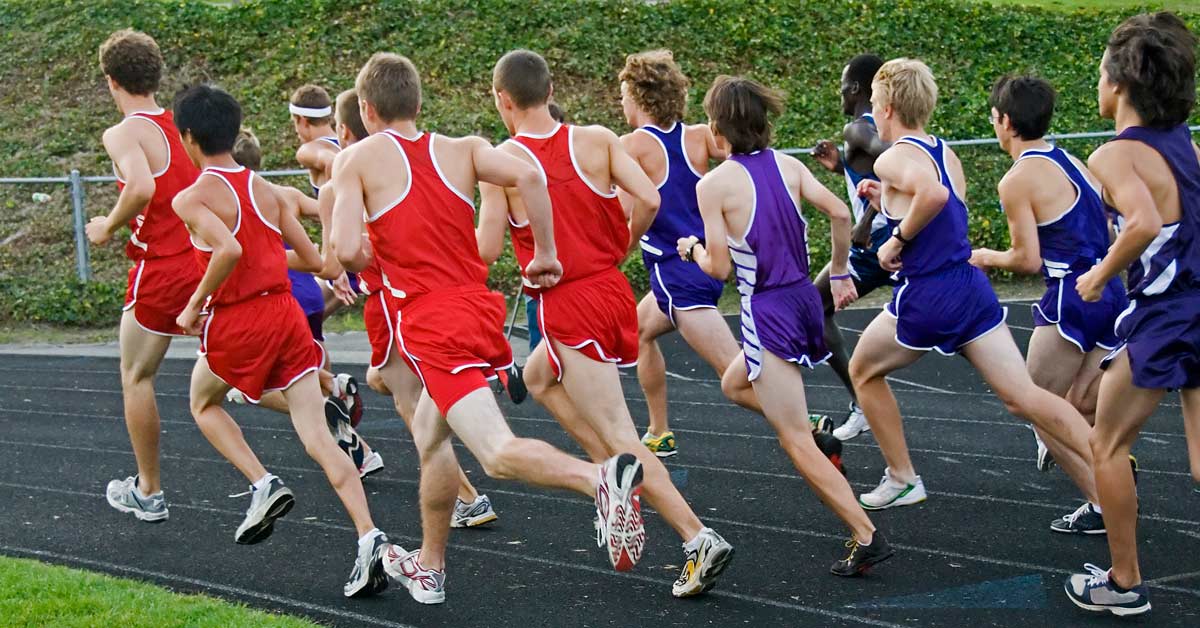Every successful strength and conditioning coach prioritizes their continuing education, blocking off time to focus on broadening their knowledge and developing their craft. While I prefer more social means of continuing education—such as attending seminars and talking shop or visiting other coaches—reading is required to take your knowledge and coaching abilities to the next level, and it has little barrier of entry in today’s age.
Too often, though, young coaches get caught up in books that only go into specific, specialized programs or books that are not applicable to where they are in their careers. These books are important and have a time and place, but there is so much that can also be learned from reading more general, principle-based books…or even stepping outside of the strength and conditioning circle and reading books that don’t tie directly to the subject!
Too often, though, young coaches get caught up in books that only go into specific, specialized programs. Share on XEarlier in my career as an intern, I read any and every piece of training material that I could get my hands on. I devoured books, articles, and podcasts daily. While I still do this, I am a bit more selective now. I originally read books that I had no foundation to be reading—books that were well over my head at the time—and while I wasn’t taking away much from them at that moment, I figured I was doing a good enough job.
When I took a step back and took my own advice—focusing on more applicable books for me, whether they were training related or not—I found more meaningful information on how to better coach, communicate, and connect with those around me. This led to success on the floor and growth in my young career.
Here are 10 books I would recommend other younger strength and conditioning coaches invest in and read.

1. Science and Practice of Strength Training—Vladimir M. Zatsiorsky
Starting the list off is one of the single best strength and conditioning books available. Science and Practice covers all the necessary components of strength and conditioning training and covers all the information required to have a larger base of knowledge on the subject.
The book is broken into three parts:
- Basics of strength and conditioning
- Methods of strength and conditioning
- Training for specific populations
Each section builds off the previous one, wrapping up in a complete manual that you can refer to for years to come.
Key Takeaway: This really set the foundation that I built upon in all my future reading and studying. This book changed how I understood and utilized certain training methods, such as the maximum, repeated, and dynamic effort methods.
Science and Practice of Strength Training really set the foundation that I built upon in all my future reading and studying. Share on X
Coming from a powerlifting background, I had a different understanding and knew of only one way to utilize these methods—in reality, however, the scope of these and many other strength and conditioning principles are much greater than just the few scenarios they are typically associated with. I can now use all of these training methods outside of the powerlifting realm, if appropriate.
2.Ultimate MMA Conditioning—Joel Jamieson
Next up is the best conditioning-specific book, but with the most unfitting name. Even if you have no desire to work with MMA athletes, there are so many benefits to be gained from reading this book.
Jamieson not only breaks down the physiology of each energy system in a way which makes sense, but also goes into detail on how they are connected. Along with this, he includes a complete training guide on conditioning methods and how to lay them out in an organized fashion.
It’s called strength and conditioning for a reason; don’t be one-dimensional in your training if you’ve yet to pick this up.
Key Takeaway: This book completely changed how I prescribed conditioning in a training program. What was once an afterthought or left up to the individual to do on their own was now something that I felt confident and more inclined to take responsibility for.
Also, this book taught me the value of the aerobic system and how training my athletes aerobically was not going to kill their strength and power gains. In fact, the opposite is true—expanding their gas tanks allows us to train more at higher qualities, recover better, and have a wider base to build the other two energy pathways upon.
3. Extreme Ownership—Joko Willink
The first non-training related book on the list. Extreme Ownership at its core is about taking responsibility for a situation regardless of your involvement—this is a requirement of any leader and a great sign of maturity.
Taking responsibility for a situation regardless of your involvement is a requirement of any leader and a great sign of maturity. Share on XWhen coaching, there are numerous factors out of our control, yet somehow we are still responsible. This book can help us better manage and understand these situations.
Willink also goes into a lot of interesting personal stories, which make the book an easy and enjoyable read.
Key Takeaway: While I am typically not a fan of this style of book—military principles for the everyday person—I believe I found this book at a right time, when I needed to better accept responsibility for the situations in which I was involved.
I took away a greater sense of control within my day-to-day working schedule. So much of my work within the private and collegiate setting was being altered due to schedule or coaching changes—all things out of my control, but which I still had to account for. Just because my 60-minute session was cut to a 20-minute session doesn’t mean that the day was ruined; we can still get the most out of those 20 minutes.

4. Ego is the Enemy—Ryan Holiday
Ego is the Enemy is a philosophical book that targets a person’s number one flaw: themselves.
While I recommend any book written by Ryan Holiday, this book spoke to me the most. Some examples of particularly effective chapters include “Become a Student,” “Always be a Student,” “Get Out of Your Own Head,” and “Entitlement, Control, & Paranoia.”
Key Takeaway: After reading some of those chapter titles, it should be clear why I would recommend this book to a young coach. Like many, when I first got into coaching, I thought that I knew a lot more than I actually did. While I wasn’t flat out disrespectful, my attitude certainly hindered many opportunities to learn and grow as a coach because my own ego was in the way.
Like many, when I first got into coaching, I thought that I knew a lot more than I actually did. Share on XIf I had read this book sooner, I know that I would have been better off for it. There are moments that I remember where I would disagree with a coach on miniscule things such as slight exercise variations or them showing up 5 minutes late to sessions, even after I agreed to it. Looking back at these specific moments, I know that my own ego was directly causing the issue to be intensified whereas I could have corrected it and saved myself a lot of internal stress.
5. Conscious Coaching—Brett Bartholomew
This was one of the first strength and conditioning “coaching communication” books I came across. Conscious Coaching lays out how to better build a genuine level of buy-in with those you work with.
Bartholomew opens up and shares his own personal struggles at the beginning of the book, creating instant buy-in from the reader—which was something I appreciated. The book then dives into specific athlete archetypes and tenants of trust, offering immediate applicable material.
Key Takeaway: I remember reading this book at a time when I just started putting more of an emphasis on learning the “art of coaching.” Instead of sets and reps, I was focusing more on communication and connection. Mind you, this is where I personally felt my greatest strengths in coaching were.
After reading Bartholomew’s book, I realized that I still had a long way to go. Brett broke down communication similar to how many break down a periodization plan. I was hooked, and this led me to continue with more education on these subjects.
My main takeaway was adjusting my delivery of communication for different individuals. I was fortunate that I worked with a wide array of clients, so I could practice the same message delivered but in different tones, verbiage, and layers of explanation. This sounds like common sense, but it is a skill…and skills need to be sharpened.
My main takeaway was adjusting my delivery of communication for different individuals. Share on X6. The Process—Fergus Connolly and Cam Josse
With the subtitle The Methodology, Philosophy, & Principles of Coaching Winning Teams, this is a must-read for coaches to better grasp the additional factors outside of the physical preparation that goes into winning games.
The Four Coactive Model presented in the book should be a requirement for every coach to understand. The model demonstrates that the complete package of physical, tactical, technical, and psychological pieces is required by an athlete and team to be successful. Each model can be broken down even deeper from there.
Key Takeaway: This book was eye-opening and really hit home for me at the time, showing me that squat and hang clean numbers have little involvement with wins in the sporting field. It changed how I view my role in strength and conditioning and made me understand that I am just a small piece of the larger picture.
With the help of this book, when implementing games into my training programs, I could actually break down the purposes of offense and defense in a much more intelligent manner. It caused me to view everything in terms of creating or limiting space and opened an entirely new facet of cueing with my exercises.
The book mentions a takeaway game, which helped me fill some time with my larger youth team sessions in a productive manner, and that alone makes it worth the read.
7. Charlie Francis
This may be cheating, but anything written by Charlie Francis cannot be left off a list for young coaches, whether it be The Charlie Francis Training System, Speed Trap, or any other random articles that you can find buried within the depths of the internet.
This may be cheating, but anything written by Charlie Francis cannot be left off a list for young coaches. Share on XWell ahead of his time, Charlie Francis discusses countless ideas and methods in detail that have greatly contributed to the field today. It’s also just astonishing reading some of his training notes, and prescriptions throughout his writing.
Key Takeaway: Reading Charlie Francis changed what I consider to be speed training. Having him break down the zones of speed training proved to me that much of what I was doing for “speed training” was actually quite the opposite.
Along with this (and countless other things), reading Francis changed how I implemented rest and recovery when training my athletes. I don’t believe I used a stopwatch—except to time sprints—before I came across Charlie Francis. Now I have a stopwatch to monitor the rest between reps, between sets, the time of tempo runs, etc. to better control these training variables.
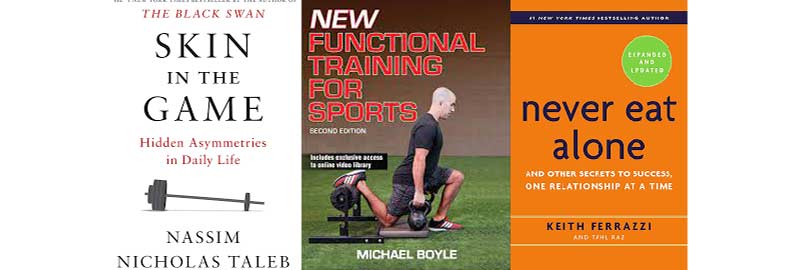
8. Skin in the Game—Nassim Nicholas Taleb
Many of Nassim Taleb’s books go into complex teachings and thoughts. Skin in the Game is no different, but it focuses on a concept strength and conditioning coaches should strive for. As the title implies, you need “skin in the game” to develop your skills and abilities as a young coach.
This book was first recommended by Keir Wenham-Flatt and applies directly to those in the private sector or who oversee others in a department. Take your time on this one and focus on grasping the concepts rather than just finishing the book.
Key Takeaway: My biggest takeaway from reading Skin in the Game was to treat myself more like a business and put myself out there more through a range of means (such as writing this article). Reading Taleb changed how I handled working in the private sector—even though I worked for someone else, I used that time to really work for myself and begin to build a body of work. It also brought me to understand that even if I wanted to make a small change in the space, I had to put myself out there no matter how uncomfortable it became at times.
My skin in the game led to better results and success in the long term.
9. Functional Training for Sports (2nd Edition)—Michael Boyle
Mike Boyle created an extremely sound book on strength and conditioning within athletics. The book has a complete training layout of exercise selection, progressions, and regressions that alone would earn it a spot on this list.
Functional Training isn’t going to go over highly advanced training models or new, unique exercises. In fact, the book will be quite boring if that is what you are expecting. What Boyle does is break down the fundamentals of strength and conditioning and excel at them—considering how long Boyle has been in the game and consistently successful, we would be silly to not at least read his work and try to listen!
What Boyle does is break down the fundamentals of strength and conditioning and excel at them. Share on XKey Takeaway: Functional Training exposed me to a completely different world of training: not praising barbell back squats, using chin ups as a primary exercise, and a dominant focus on single leg training.
Reading this changed how I viewed prescribing exercises. I didn’t have to perform any particular exercise, especially at the athlete’s expense. Putting square pegs in round holes leads us nowhere, and implementing the basics at a high level still produces dramatic results.
10. Never Eat Alone—Keith Ferrazzi
At one time, it was almost impossible to enter a bookstore and not see this bright, orange, national best seller on the shelves. The book even became a bit oversaturated—though it just has too much to offer the young coach not to discuss it.
Never Eat Alone focuses on developing relationships in impactful ways and can be used within any job setting—especially for coaches who will potentially be dealing with athletic directors, station commanders, head coaches, parents, and athletes from all walks of life.
Key Takeaway: This book changed my perspective on relationship building in a genuine way—just because I have to work to develop a relationship and network doesn’t make it any less genuine. If anything, it’s what is best for everyone involved.
Just because I have to work to develop a relationship and network doesn’t make it any less genuine. Share on XAfter reading this book I started being more mindful when reaching out to coaches. Yes, I’m still reaching out for the correct reasons, but I understood to respect their time much more and had an actual objective for the contact opposed to just “talking shop” with someone I just met. Now when I reach out to coaches I do not know, it is for a detailed, specific reason with much more intent behind the contact.
Create Your Own Takeaways
This list provides a helpful start, but it’s just that: a start. I recommend buying hard copies, reading them multiple times, highlighting spots, making notes, and most importantly, applying their teachings in the real world.
Even if you have already read these books, read them again—having time pass and being in a new place in life will offer a different perspective, exposing new insights or shining a new light on what you previously understood.
Since you’re here…
…we have a small favor to ask. More people are reading SimpliFaster than ever, and each week we bring you compelling content from coaches, sport scientists, and physiotherapists who are devoted to building better athletes. Please take a moment to share the articles on social media, engage the authors with questions and comments below, and link to articles when appropriate if you have a blog or participate on forums of related topics. — SF
